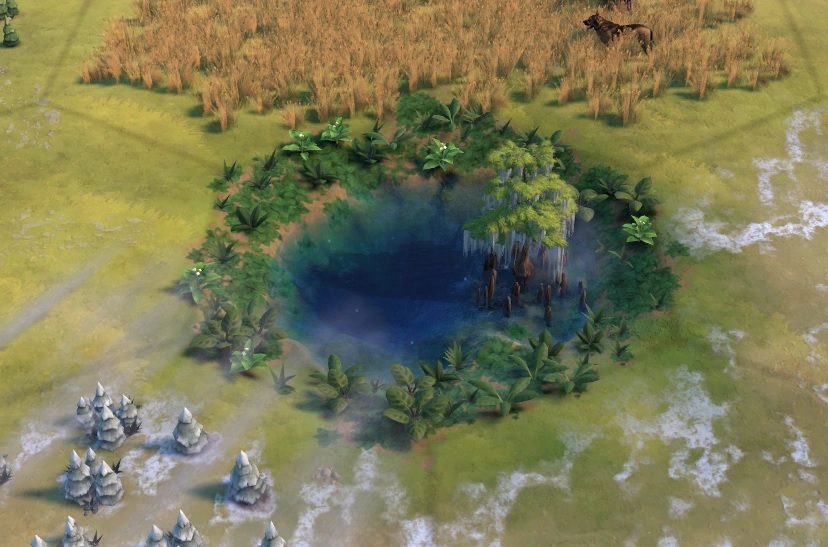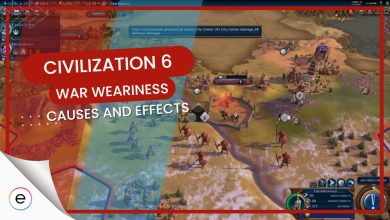Natural Wonders in Civilization 6 are more than just pretty landscapes; they offer bonuses and strategic advantages that can mean the difference between victory and defeat. The top natural wonders in Civ 6 can be used to achieve different victory conditions. The importance can also be derived from their real-world context, which, in turn, can provide various in-game effects, such as resource bonuses to the player.
Natural wonders in Civilization 6 offer unique bonuses and effects:
- Each natural wonder provides various bonuses, such as culture, gold, and unit movement.
- Consider these bonuses when settling or planning strategies for victory.
- Some wonders are great for early-game development, while others offer long-term benefits.
- Natural wonders can aid in pursuing different victory conditions.
- Protect them from other civilizations as they can be contested.
Fountain Of Youth

The Fountain of Youth is a highly desirable natural wonder in Civ 6 due to its unique bonuses and effects. Located in the New World, this wonder is surrounded by lush greenery and offers fresh water and abundant resources to any civilization that claims it.
| Natural Wonder | Fountain Of Youth |
|---|---|
| Size | The wonder spans one tile and is passable. |
| In-game bonuses and effects |
|
- The special ability makes this wonder a valuable asset during battles, as it can help heal wounded units quickly and efficiently.
- In order to make use of the Fountain of Youth effectively, it’s important to prioritize claiming it early in the game, as it’s only one tile and can be easily snatched up by other civilizations.
- Once claimed, it’s recommended to build cities nearby to take advantage of the fresh water and other resources that the wonder provides.
- The Fountain of Youth can be useful in all victory conditions, as the bonuses it provides are valuable in any situation.
- However, it’s especially useful for civilizations pursuing a scientific or religious victory, as the additional Science and Faith can greatly speed up research or help establish a dominant religion.
The Fountain of Youth is a highly desirable natural wonder in Civilization VI, offering significant bonuses and effects to any civilization that claims it. Its fresh water and healing abilities make it a valuable asset during battles, while its Science and Faith bonuses can help civilizations achieve victory in a variety of ways.
Bermuda Triangle

The Bermuda Triangle is a natural wonder located in the ocean, shrouded in mystery and intrigue.
| Natural Wonder | Bermuda Triangle |
|---|---|
| Size | The wonder spans three tiles (triangle) and is passable. |
| In-game bonuses and effects |
|
To utilize the Bermuda Triangle effectively:
- Strong naval presence: Focus on building a powerful navy to take advantage of increased naval unit movement speed for exploration and resource acquisition.
- Scientific development: The wonder’s adjacency bonus to science tiles can aid in technological advancement, making it beneficial for a science victory.
- Entertainment district: Consider constructing an entertainment district near the Bermuda Triangle to generate additional tourism for cultural victories.
- Victory conditions: The Bermuda Triangle is versatile and can be valuable for science, cultural, or domination victories. It can facilitate technological advancement, cultural domination through tourism, and swift naval unit movements for domination victories.
The Bermuda Triangle is a unique natural wonder that offers a valuable scientific bonus and a mysterious teleportation ability for naval units. It can be an essential component of a successful naval strategy and can contribute to various victory conditions. Players should strive to incorporate it into their civilization’s overall strategy and take advantage of its benefits.
Païtiti

Païtiti’s location is inspired by the real-world lost city of the same name, which was once thought to exist in the Amazon rainforest.
| Natural Wonder | Bermuda Triangle |
|---|---|
| Size | Appears as a triangular formation of three tiles, impassable to all units. |
| In-game bonuses and effects |
|
- Païtiti’s Gold bonus to trade routes makes it particularly useful for civilizations focusing on economic victory conditions, such as a Science or Culture Victory.
- However, it can also be helpful in a Domination Victory, as the additional Gold can be used to maintain and upgrade armies.
- As with many natural wonders, players should be aware of their limitations.
- The fact that Païtiti is impassable means that it cannot be used to connect cities or provide defensive bonuses.
- Its adjacency bonus to Culture and Gold also requires careful planning, as players will need to ensure that their cities are positioned to take advantage of it.
Païtiti is a valuable natural wonder that provides significant Culture and Gold bonuses to adjacent tiles. Its location and real-world context, inspired by the legendary lost city of the same name, add to its intrigue and make it a fascinating addition to any game. Players should prioritize settling cities adjacent to its tiles and use its Gold bonus to trade routes to their advantage to achieve a variety of victory conditions.
Conclusion
Civilization 6 offers a diverse range of natural wonders that provide various benefits to players in their quest for victory. From the awe-inspiring beauty of Yosemite to the mystical powers of the Fountain of Youth, each wonder adds a unique element to the game. So go forth, brave Civilization players, and discover the wonders of the natural world in your quest for domination!
We Value Your Opinion—Please Share It.
Next Up:
Thanks! Do share your feedback with us. ⚡
How can we make this post better? Your help would be appreciated. ✍



